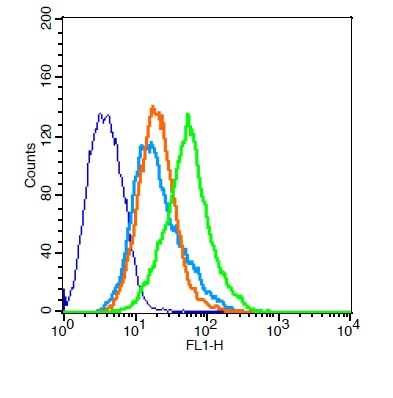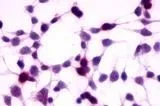GPRC5A antibody [HL1864]
GTX637589
ApplicationsImmunoFluorescence, Western Blot, ImmunoCytoChemistry, ImmunoHistoChemistry, ImmunoHistoChemistry Paraffin
Product group Antibodies
TargetGPRC5A
Overview
- SupplierGeneTex
- Product NameGPRC5A antibody [HL1864]
- Delivery Days Customer9
- Application Supplier NoteWB: 1:500-1:3000. *Optimal dilutions/concentrations should be determined by the researcher.Not tested in other applications.
- ApplicationsImmunoFluorescence, Western Blot, ImmunoCytoChemistry, ImmunoHistoChemistry, ImmunoHistoChemistry Paraffin
- CertificationResearch Use Only
- ClonalityMonoclonal
- Clone IDHL1864
- Concentration1 mg/ml
- ConjugateUnconjugated
- Gene ID9052
- Target nameGPRC5A
- Target descriptionG protein-coupled receptor class C group 5 member A
- Target synonymsGPCR5A, PEIG-1, RAI3, RAIG1, TIG1, retinoic acid-induced protein 3, G-protein coupled receptor family C group 5 member A, TPA induced gene 1, orphan G-protein-coupling receptor PEIG-1, phorbol ester induced gene 1, phorbol ester induced protein-1, retinoic acid induced 3, retinoic acid responsive, retinoic acid-induced gene 1 protein
- HostRabbit
- IsotypeIgG
- Protein IDQ8NFJ5
- Protein NameRetinoic acid-induced protein 3
- Scientific DescriptionThis gene encodes a member of the type 3 G protein-coupling receptor family, characterized by the signature 7-transmembrane domain motif. The encoded protein may be involved in interaction between retinoid acid and G protein signalling pathways. Retinoic acid plays a critical role in development, cellular growth, and differentiation. This gene may play a role in embryonic development and epithelial cell differentiation. [provided by RefSeq, Jul 2008]
- Storage Instruction-20°C or -80°C,2°C to 8°C
- UNSPSC12352203





